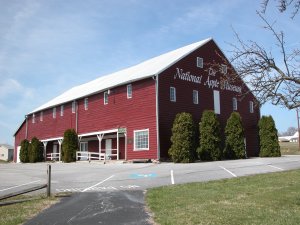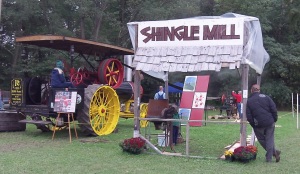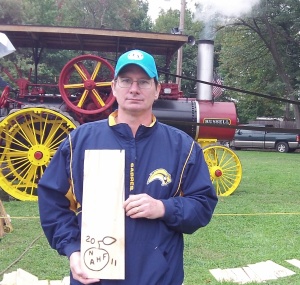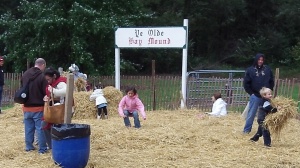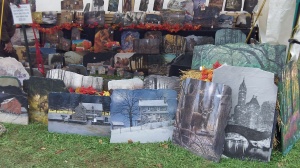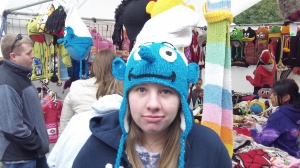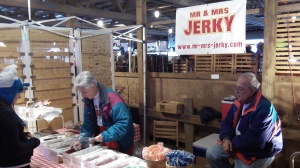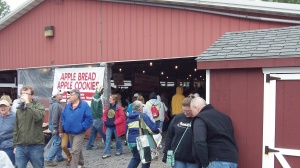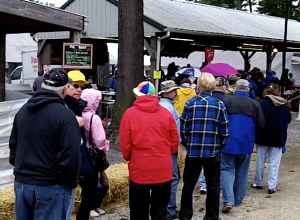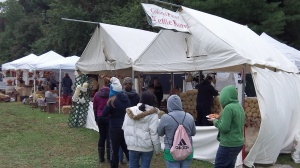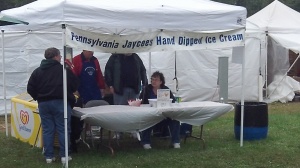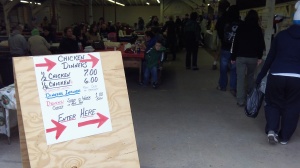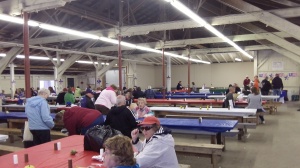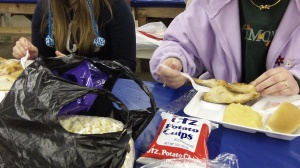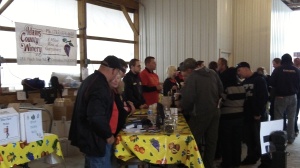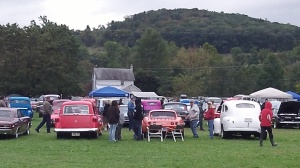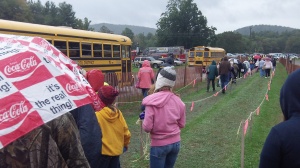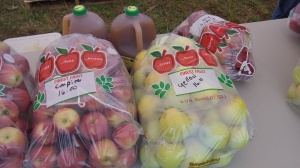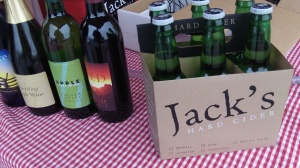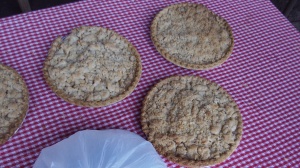For many years, one of our family traditions has been the National Apple Harvest Festival, held every year on the first two full weekends in October in Arendtsville, Pennsylvania. It’s a great time to celebrate the arrival of autumn in a beautiful setting, surrounded by low mountains and rolling apple orchards.
Driving up from Glen Burnie, Maryland, the trip takes about two hours, which is made better by the fact that we pass through Gettysburg, which is always a thrill for me, even when viewed through a car window at forty miles per hour. Knowing that I’m driving where armies tread, and imagining what the exhausted troops saw on their way to battle never gets old.
Just north of Gettysburg, a landmark that tells us we’re getting close is the National Apple Museum. This is where, on a family camping excursion in 1999, we first became of aware of the Festival. The museum is interesting, if you’re a fan of old grist or cider mills (which I am) because there are demonstrations of how apple sauce was made for centuries, plus lots of old, rustic tools. There was also a very old movie about the modern process, and free apple juice (of course). There’s a little gift shop as well.
Close to the festival site, there are plenty of signs and people directing traffic to the parking area, which is actually just two large fields adapted for vehicles. Wolf Field is closer, for the early arrivals, and McDannell Field is a bit farther away. On Saturday, the threatening weather held down the crowds, so we ended up at Wolf Field.
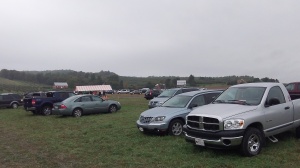
There are portable toilets near the staging area for the school buses that carry visitors to the Festival, which is good, because after a two hour drive this is a valuable resource. Once the bus is full, it sets off on a winding, sometime bumpy road to the festival.
Upon arrival, there is an admission fee: $9 for adults, $8 for seniors (60+) and children under 12 free. Once inside, everyone gets a program and a hand stamp, and then you’re free to wander wherever your heart leads. Here are some of the sights and sounds of the festival, as seen by me on Saturday.
There’s an area where real apples are turned into real applesauce which is then sold to passersby. It’s fascinating to watch the process, which somehow involves a hundred year-old steam engine.
Something else that involves a steam engine is shingle making, which is also fun to watch. Every year we get souvenir shingle, which has the year burned in, and sometimes that year’s edition number. This is the 47th year of the NAHF.
There’s plenty of live music at the NAHF. This video is of a band called Mason Vixon:
These guys carve statues from trees:
There are plenty of attractions for youngsters, such as this magician:
Hay rides through apple orchards are conducted, and there’s a play area where little ones can burn off the sugar high they just got from that candy apple:
They can also join in with the accordion man and his kiddie band:
And there’s also a Christian-themed puppet show, called Barb & Friends, which always reminded me of “Manger Babies” from King of the Hill. Here, Barb & Friends have some cats singing “Silent Night”:
If there’s any defining characteristic of the NAHF, though, it’s crafters and food vendors. A lot of the items are really nice, and it would be easy to drop a few hundred dollars in an afternoon. This is just a tiny sample:
These paintings on slate (I think it’s slate) are really awesome, and there were at least a dozen I would have loved to have, but they’re priced way outside my budget:
These hats were everywhere Saturday, and with the weather suddenly cold, they were flying out of the tents. Sarah pried a Smurf hat out of her father.
To escape the cold breeze, we spent a lot of time in the numerous shed barns, which were also filled with vendors.
I saw this in one shed, and almost bought it, because I love How The Grinch Stole Christmas:
No trip to the Apple Harvest Festival is complete for us with a major stocking-up of apple bread and apple cookies. Don’t wait until the last day, though, or you’ll miss out.
If the smell of apple bread makes you hungry, there’s lots to eat at the NAHF. Some of the lines, though can be quite long, such as for pit beef, or even kettle korn:
There was no line on this frigid day, however, at the ice cream stand:
To save time and money, and to get a chance to sit down inside, we always eat the chicken dinner, which is reasonably priced and quickly served in a place that usually has plenty of available seating:
For those more cultured than we, you could attend the wine tasting, and follow that up with a visit to the Apple Auditorium, where a performance by Hanover Children’s Ballet Theatre & Company was underway. I’m not sure, but I think they were singing about their love for the Greek god, Zeus. Very confusing.
By this time, you may need a restroom break, and you’ll be pleased to know that there are plenty of first-class outdoor facilities:
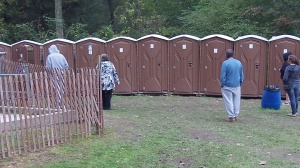
If you’re into classic vehicles, there are plenty of those, too, along with vintage tractors.
We spent about three hours at the Festival Saturday, and then the threatened rain started in earnest, so we made a bee-line to the bus-line.
At the parking fields, there are tables set up to sell apples, pumpkins and cider to take home. We always load up, because Laurie enjoys baking apple dishes, and this, too, has become an autumn family tradition.
Just outside the parking field, we stopped at a roadside stand and got a couple of apple pies, apple wine and hard cider. That should hold us for a few days, anyway.
And then, it was into the car for the long ride home. Tired, cold and a little wet, but satisfied with another successful trip to the Apple Harvest Festival behind us, I soon dozed off in the passenger seat, leaving the more alert Laurie to get us home safely.
